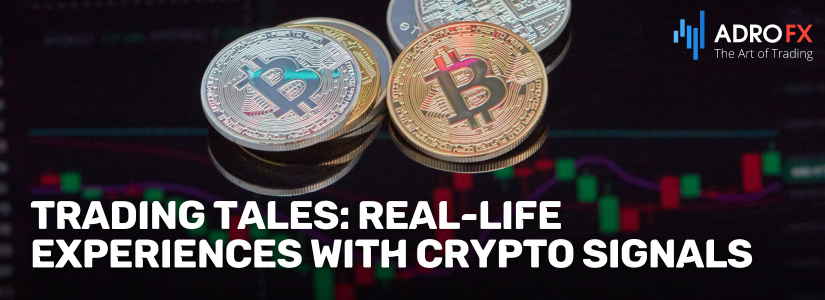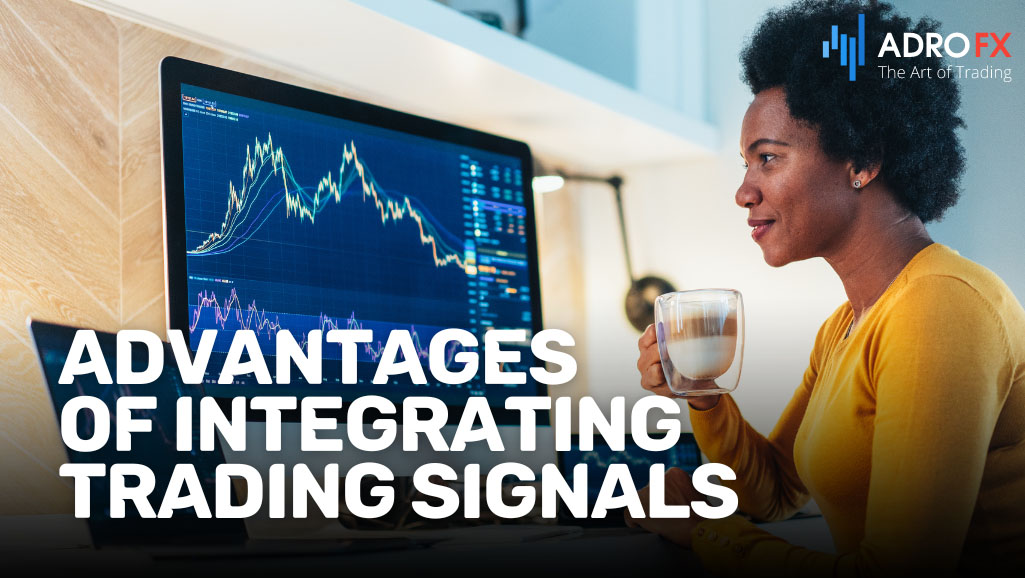Trading Tales: Real-Life Experiences with Crypto Signals

In the fast-paced realm of cryptocurrency trading, navigating the unpredictable terrain is paramount. With the inherent volatility of this asset class, making well-informed decisions isn't just advisable; it's crucial for managing risk and maximizing potential gains. This underscores the necessity for advanced tools capable of guiding traders through the ever-shifting market dynamics.
Among these indispensable resources are trading signals, a proven method for decision-making tailored specifically to the unique characteristics of the cryptocurrency market.
Implementing trading signals can act as a guiding light, offering actionable insights derived from various factors such as market trends, price fluctuations, and statistical analysis. Whether you're new to trading or a seasoned investor, grasping the significance and practicality of trading signals is vital for refining and enhancing your trading approach.
Exploring Trading Signals
In the realm of trading, particularly amid the vibrant cryptocurrency market, trading signals serve as indispensable guides. Essentially, a trading signal acts as a catalyst, signaling the opportune moments to initiate buying, selling, or holding actions on specific assets based on pre-established criteria. These signals are meticulously crafted to arm traders with the insights required to swiftly make well-informed decisions.
The formulation of trading signals encompasses a fusion of technical analysis, fundamental analysis, and sometimes quantitative methodologies. Technical analysis entails dissecting historical price charts and diverse indicators such as moving averages and the Relative Strength Index (RSI). Conversely, fundamental analysis delves into intrinsic factors like economic conditions, industry trends, and the performance of underlying companies.
Within the world of cryptocurrency, this analysis may extend to sentiment analysis extracted from social media and news trends. Quantitative methods deploy sophisticated algorithms and mathematical models, often integrating machine learning algorithms to forecast future price movements.
Trading signals typically fall into three primary categories: Buy signals, Sell signals, and Hold signals. A 'Buy' signal indicates an opportune moment to procure an asset with the anticipation of its value appreciating. Conversely, a "Sell" signal advocates for liquidating a position in anticipation of a decline in the asset's value. Lastly, a 'Hold' signal advises maintaining current positions, suggesting that no advantageous trading opportunities are currently discerned.

The Transformation of Trading Signals
When delving into the world of cryptocurrency trading, it's fascinating to trace the lineage of trading signals back to their origins in traditional financial markets like stocks and forex. Despite the groundbreaking nature of cryptocurrencies, the utilization of trading signals is not a recent development; instead, it has long been a fundamental aspect for traders and investors seeking strategic advantages in these well-established markets.
In both the stock and forex spheres, trading signals serve as dependable indicators for pinpointing entry and exit points, drawing from a plethora of technical and fundamental variables. Although the specific metrics employed may differ, the fundamental objective remains consistent: to equip traders with actionable insights for making informed decisions. The effectiveness of these signals hinges significantly on the quality of analysis and the proficiency of the provider. Within established markets, reputable signal providers often boast a track record of accuracy and cultivate a devoted community of traders.
Trading signals offer numerous advantages, including time efficiency and a structured framework for trading, thereby acting as a guiding light for traders who may lack the resources or expertise for extensive market analysis. However, it's crucial to acknowledge that no signal guarantees success; rather, they serve as tools intended to enhance trading strategies, not replace them entirely.
As we transpose this understanding into the realm of cryptocurrency, the role of trading signals remains largely consistent, albeit with adjustments to accommodate the market's unique volatility and behavioral characteristics. In essence, trading signals have demonstrated their effectiveness and reliability in traditional markets, making them an essential resource that cryptocurrency traders would be remiss to disregard.
Customizing Signals for the Cryptocurrency Realm
In the realm of cryptocurrency, the volatile terrain demands specialized navigation tools tailored to its unpredictable nature. Unlike conventional markets, the crypto landscape is characterized by swift and drastic price fluctuations, sometimes unfolding in mere minutes. This environment presents both lucrative opportunities and significant risks, underscoring the importance of specialized tools designed to navigate the unique challenges of this market.
Trading signals have evolved to meet the demands of cryptocurrency trading. In contrast to traditional markets, these signals prioritize technical analysis and sentiment analysis, given the absence of established fundamentals. Moreover, they are engineered to swiftly react to market-moving events, furnishing traders with timely, actionable data crucial for navigating a market that operates around the clock.
Prominent platforms offering cryptocurrency trading signals, such as AdroFx and TradingView, cater to a diverse spectrum of traders, ranging from novices to seasoned professionals, offering varying degrees of sophistication in their signal algorithms. When selecting a platform, it's essential to conduct comprehensive research, taking into account factors such as credibility, user feedback, and the underlying methodology for signal generation.

Advantages of Integrating Trading Signals in Cryptocurrency Trading
In the rapidly evolving landscape of cryptocurrency trading, time is of the essence. One of the key advantages of integrating trading signals is their time-saving nature. By delivering real-time, actionable insights, these signals remove the need for constant monitoring of price charts and news feeds. Instead, they provide instant alerts that streamline trading decisions, allowing traders to concentrate on honing their strategies and other critical tasks.
Another significant benefit is risk mitigation. Trading signals are grounded in thorough analysis, whether technical, fundamental, or a combination of both. This analytical foundation helps traders avoid emotional decision-making, a common pitfall that often leads to costly errors. With accurate signals, traders can adeptly set Stop Loss and Take Profit levels, thus managing risk more effectively.
Furthermore, trading signals hold the potential to significantly boost profitability. By offering informed recommendations on entry and exit points, they empower traders to seize market opportunities that might otherwise be overlooked. While it's important to acknowledge that no trading signal can guarantee returns, integrating them into a comprehensive trading strategy can enhance decision-making, thereby improving the chances of executing profitable trades.
Pitfalls to Consider
While trading signals offer a plethora of advantages, it's paramount to acknowledge their potential drawbacks. Foremost among these is the issue of false signals. No trading signal is infallible; there will inevitably be instances where the recommended action fails to align with the actual outcome. False signals can result in unnecessary losses and have the potential to erode trading capital if not managed with caution.
Another consideration is the cost associated with trading signal services. Many platforms provide their services at a premium, necessitating monthly or annual subscriptions. These expenses can accumulate, and if the signals lack accuracy, traders may incur losses that outweigh the gains obtained from following them. Hence, conducting a thorough cost-benefit analysis is essential to evaluate the service's suitability for one's trading requirements.
Moreover, there's the risk of excessive reliance on signals. Although trading signals can be incredibly advantageous, they should not serve as a substitute for fundamental trading skills and market expertise. Relying too heavily on signals can foster complacency, diminishing the diligence in monitoring market trends and other factors influencing asset valuations. Additionally, signals fail to account for individual risk tolerance or financial circumstances, elements that should always be considered in each trading decision.

Real-World Examples
Let's dive into real-life scenarios to grasp the practical implications of crypto signals. These examples illuminate the potential rewards and risks inherent in relying on trading signals within the cryptocurrency market.
Scenario 1: A group of traders strategically leveraged a blend of technical and sentiment analysis signals from a reputable platform. Acting swiftly on a "Buy" signal for Bitcoin when it hovered around $40,000, they rode the subsequent upward trend, ultimately selling at $45,000 as per the "Sell" signal. By diligently following these crypto signals, they capitalized on a significant profit within a relatively short time frame.
Scenario 2: Conversely, not all journeys with crypto signals lead to immediate success. Numerous traders, enticed by the promise of quick gains, subscribed to a trading signal service. Despite receiving multiple "Buy" signals for Ethereum, the market moved against predictions, resulting in unfavorable outcomes and losses. This scenario underscores the critical importance of complementing signals with personal analysis and risk management strategies.
These examples vividly illustrate the dual nature of crypto signals - while they can pinpoint lucrative trading opportunities, their effectiveness hinges on accuracy and the trader's own acumen.
Choosing a Reliable Provider of Crypto Signals
Selecting the appropriate provider of crypto signals is a critical decision that can significantly influence your trading journey. Firstly, it's imperative to assess the credibility and track record of the provider. Look for providers with a solid history of delivering precise signals, ideally supported by data and performance metrics. Evaluate the expertise of the team behind the service, particularly in financial markets and data analysis, as it reflects reliability.
Furthermore, consider user reviews and expert evaluations of the signal provider. User feedback offers valuable insights into signal effectiveness, timeliness, and the quality of customer service. These aspects provide a clearer picture of what to expect from the provider.
Lastly, conduct a thorough cost-benefit analysis to compare different crypto signal providers. Evaluate subscription fees against the potential returns expected from the signals. While some platforms offer free signals, others may charge a premium for more comprehensive analysis and higher accuracy. Exercise caution with services promising guaranteed returns, as trading inherently involves risks, and no service can guarantee foolproof outcomes.
Conclusion
In conclusion, in the ever-evolving landscape of cryptocurrency trading, informed decision-making is paramount for success. With the market's inherent volatility, sophisticated tools are essential to navigate its complexities effectively. Among these tools, trading signals play a pivotal role, offering tailored insights for cryptocurrency trading dynamics.
Integrating trading signals into your strategy provides access to timely insights derived from various market factors. Whether you're a beginner or an experienced trader, understanding and utilizing these signals can refine your approach and improve your trading outcomes.
However, it's crucial to acknowledge that trading signals are not without risks. False signals and over-reliance are potential pitfalls that traders must be mindful of. Additionally, the cost of signal services underscores the importance of thorough due diligence in selecting a provider.
Real-world examples highlight both the potential rewards and risks of trading signals. While they can lead to profitable trades, traders must exercise caution and complement signals with their own analysis and risk management strategies.
In summary, trading signals offer valuable efficiency and insights in cryptocurrency trading. When used judiciously as part of a comprehensive trading strategy, they can be powerful tools for achieving trading goals. However, prudent decision-making and a deep understanding of market dynamics remain essential for sustained success in cryptocurrency trading.
Ready to embark on your journey in the dynamic world of cryptocurrency trading? Don't navigate the complexities alone. Explore reputable trading signal providers to gain timely insights and strategic advantages. Remember, success in cryptocurrency trading requires a blend of informed decision-making, market knowledge, and risk management. Start your journey today and unlock the potential of crypto trading with trusted signal services.
About AdroFx
Established in 2018, AdroFx is known for its high technology and its ability to deliver high-quality brokerage services in more than 200 countries around the world. AdroFx makes every effort to keep its customers satisfied and to meet all the trading needs of any trader. With the five types of trading accounts, we have all it takes to fit any traders` needs and styles. The company provides access to 115+ trading instruments, including currencies, metals, stocks, and cryptocurrencies, which make it possible to make the most out of trading on the financial markets. Considering all the above, AdroFx is the perfect variant for anyone who doesn't settle for less than the best.










